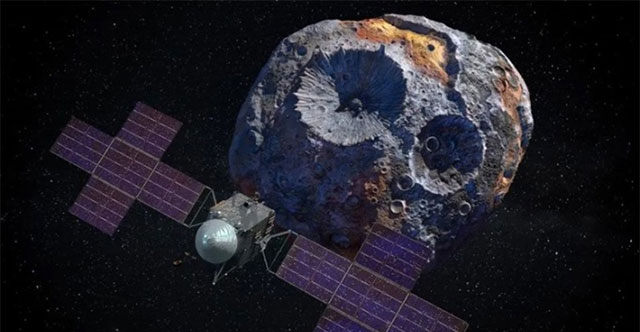
A laser communication system aboard the Psyche spacecraft bound for the asteroid belt between Mars and Jupiter has transmitted data back to Earth over a record-breaking distance.
Located on NASA's Psyche spacecraft, the Deep Space Optical Communications (DSOC) technology continues to break records. While the spacecraft does not rely on optical communications for its data transmission, the advanced technology is demonstrating its capabilities for future missions. After linking up with Psyche's radio-frequency transponder, the laser communication system sent a copy of engineering data across the vast distance of 225 million kilometers, 1.5 times the distance between Earth and the Sun, Phys.org reported on April 25.
Proving Viability for Future Missions
This achievement demonstrates the potential for spacecraft to use optical communications in the future, enabling quicker transmission of complex scientific information, as well as high-resolution images and videos, which could support NASA's next human mission to Mars.
The experimental laser communications technology is designed to transfer data from deep space at rates that are 10-100 times faster than current radio-frequency systems used on missions today. After its launch on October 13, 2023, the spacecraft has continued to perform well and is steadily making its journey to the asteroid belt between Mars and Jupiter to study the Psyche asteroid.
Impressive Data Transmission Rates
NASA's optical communications experiment demonstrated the system's ability to transmit test data at peak rates of 267 megabits per second (Mbps) from the laser transmitter's near-infrared beacon to the receiver on the spacecraft in flight.
Previously, on December 11, 2023, the experiment transmitted a 15-second ultra-high-definition video back to Earth from 31 million kilometers, which is approximately 80 times the distance between Earth and the Moon. Along with other test data, the video included a digital version of the University of Arizona's "Psyche Inspired" artwork that was uploaded to the laser transmitter on the spacecraft before its launch last year. As the spacecraft increased its distance, the pace of data transfer slowed down as expected. In a test on April 8, the spacecraft transmitted test data at peak rates of 25 Mbps, significantly exceeding the project's goal of at least 1 Mbps at that distance.
Additional Data Transmission Tests
The team also commanded the transmitter to beam data produced by Psyche itself, using optical technology. While Psyche transmits data via radio frequency to NASA's Deep Space Network (DSN), the optical communications system simultaneously transmitted a portion of that data to the Hale Telescope at Caltech's Palomar Observatory in San Diego County, California.
After Psyche's launch, the optical communications experiment initially relied on pre-loaded data for transmission, including a video of a cat named Taters. The project then demonstrated how the receiver could pick up data from a high-power laser at the Jet Propulsion Laboratory's (JPL) Table Mountain Facility near Wrightwood, California. Data were even transmitted to the receiver and looped back to Earth the same night.
The experiment transmitted test data, as well as still images, to and from Psyche over the round-trip distance of 450 million kilometers. It also collected extensive engineering data on the performance characteristics of the optical communications link.
